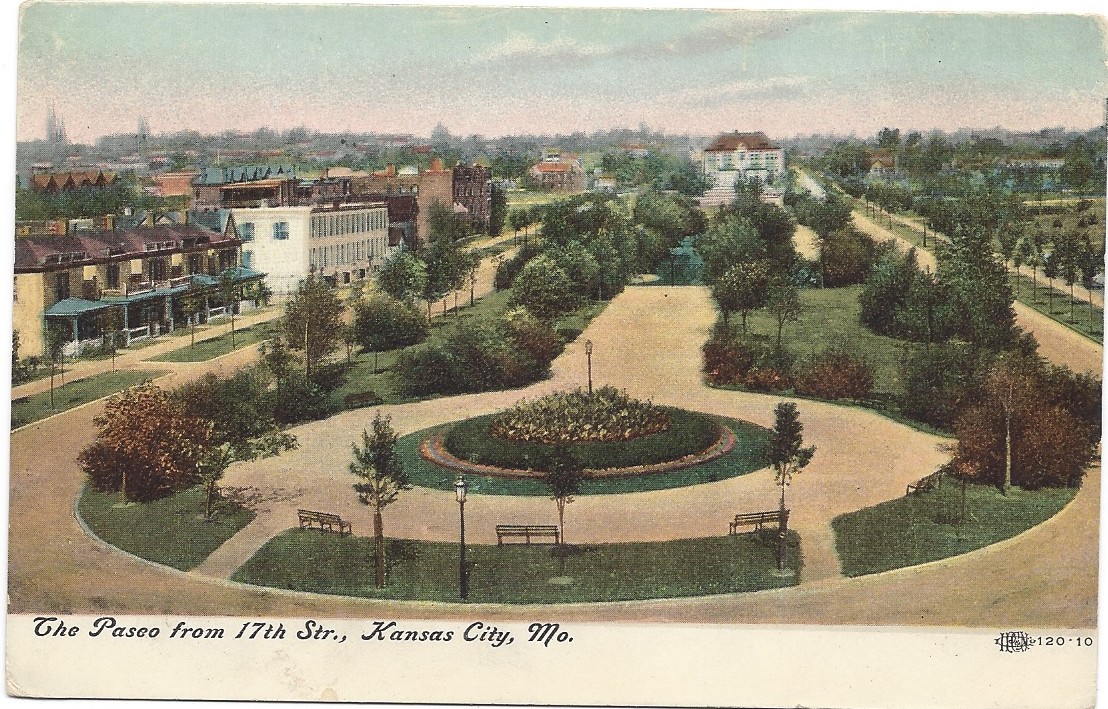The Paseo on 17th St.
After the Civil War, Kansas City grew quickly. Like, really fast. In 1870, a mere 25,000 residents populated Kansas City and by 1885, the city touted more than 100,000 people. At this point, Kansas City was simply known as a muddy cow town. August Meyer (1851-1905), president of the newly created Park Board, developed the 1893 Plan for Parks and Boulevards (based on the national “City Beautiful’ movement that brought the European grandeur architecture to the United States). Meyer hired famed landscape architect George E. Kessler to execute this plan. Meyer wanted to mold Kansas City not only into a beautiful city, but also a well-coordinated city with an intricate system of roads that promoted outward growth. Meyer also pushed for public parks, arguing that Chicago and St. Louis had them, and so should Kansas City! Despite steep, unsightly hills and muddy river bluffs, Kessler worked with the flow of the land and created more than 20 miles of winding boulevards that were sprinkled with art installations and which would soon make Kansas City famous. The best known boulevard that sprouted from this project: the Paseo, that started at the fresh, tree-lined bluffs of Cliff Dr. through to the city center. Named after the majestic Paseo de la Reforma in Mexico City, the Paseo (definition: walk or promenade) became known as the fashion-forward section of town. Kessler considered the Paseo not only a boulevard, but a parkway. He designed it to intertwine the beauty of nature.











